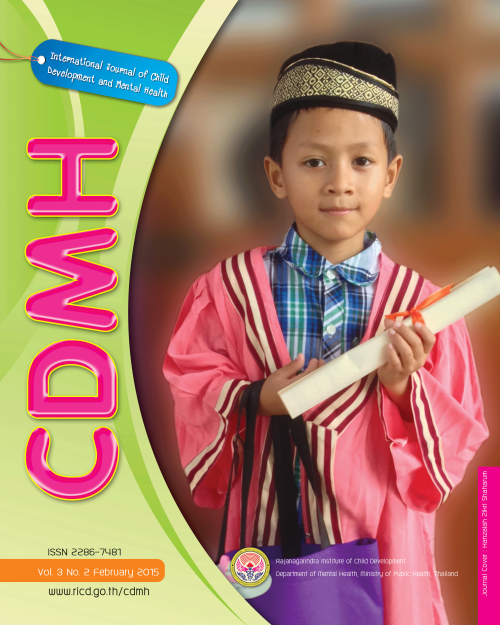The Effect of A Multisensory Program on Children with Autism
Main Article Content
Abstract
Children with autism often show a wide
range of difficulties in sensory processing where
they might experience over or under sensitivity
to sound, touch, taste, smell and light. There is a
need to provide appropriate sensory stimulation
or comfort to help children with autism to
integrate their senses and have more pleasurable
interactions with people and their environment.
Snoezelen® is a multisensory environment that
provides a range of sensory stimulations that are
tailored to meet the needs of children with autism.
The multisensory environment provides direct and
indirect stimulation of sensory modalities and can
be used individually or collectively to provide
sensory training. The purpose of this study was
to experiment with the use of equipment in the
multisensory program, as an intervention approach
to provide appropriate sensory stimulation or
comfort in a sensory environment that addresses
the sensory processing needs of children with
autism. The study focused on three main sensory
areas - visual, auditory and tactile. The study
comprised of six children with autism from ages
5-8 years old. Each autistic child attended an hour
session twice a month over a year (24 sessions).
The findings show that children with autism
improve in their visual, auditory and tactile sensory
functioning, using a structured program. The children
learn to follow instructions, understand specific
concepts, and became more aware of their surroundings.
Article Details
![]()
Creative Commons License
This work is licensed under a Creative Commons Attribution-NonCommercial-No Derivatives 4.0 International (CC BY-NC-ND 4.0)
The authors retain copyright and permit the journal the copyright of first publication
Articles, once having passed the review process and accepted for publication in the CDMH Journal, are copyrighted under the CDMH Journal, Department of Mental Health, Ministry of Public Health. Please be aware distribution of CDMH Journal content for commercial purposes without permission is expressly prohibited. However, distribution with intent to educate, advocate, or spread awareness within the general public and research communities is permitted and encouraged with the understanding that the CDMH Journal Editorial Board do not hold jurisdiction or liability for any accompanying comments, text, or information from third parties, either in favor for or against the original article’s assertions, conclusions, methodology, or content.


